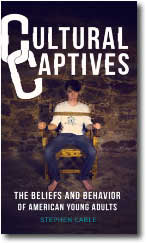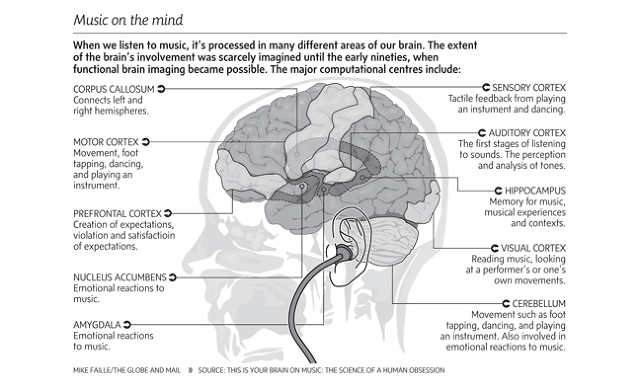From our 2015 vantage point, let’s look back at predictions made in 1999 about trends which would shape this century. Although far from the end of this century, we can make a preliminary assessment of these predictions. Were they on the right track or are they already veering from current reality?
For this exercise, we drew on predictions made by seventeen scholars in 1999, published in First Things: A Monthly Journal of Religion and Public Life.{1} They discussed what they were expecting in this next century.

Past vs. Future
Some of the scholars took the approach of looking at prior centuries to see what they could learn to help them predict future trends.
Writer Charlotte Allen{2} began by stating, “Palm-reading the lifestyles of the future usually sets you up to be proved wrong,” and looked at the last two millennia to prove her point. First, someone predicting the future in the year 1 BC would probably talk about the Roman Empire and how it was entrenched and likely to remain the dominant power. But, of course the big event of the millennium was the beginning and growth of Christianity, still impacting our world today, while the Roman Empire is only a memory. Then she notes that the future of European civilization looked grim in the year 1000, but “it turned out to be the century of European expansion and great advances in science and economics.”
Looking ahead, she had a fairly negative outlook for the West: “The combination of the new people and a fading sense of common values seems to spell disaster . . .” But on a worldwide scale, she saw us trending toward a great religious revival, the same trend that changed the outcomes of the previous two millennia.
Assessing her forecast today, we continue to see a fading sense of common values in our society and can only hope that a great religious revival will occur.
Another forecaster, political scientist Andrew Bacevich,{3} sees Americans becoming very self-centered in their view of the world. At the beginning of the last century, Woodrow Wilson brought in the idea of American global preeminence. At the end, Bill Clinton modified this sentiment to, “the allure of globalization lies in . . . the promise of gain without pain.” Bacevich believes this attitude of taking advantage of our position in the world order will continue to grow throughout this century.
However, now President Obama has brought a new idea—denying that America should be globally preeminent but rather, just one of many nations, an idea offering the promise of pain without gain. We suffer the pain of conflict with no real expectation of gaining greater respect for democracy.
The Role of Religion
One area of interest in 1999 predictions is how the role of Christianity may change. Three of our forecasters touched on this subject.
Physicist Stephen Barr{4} believed little progress will be made in answering top questions of science. Questions such as “What is consciousness, and how does it fit into . . . the physical world?” However, he believed we will make strides reconciling science and religion. He stated, “For many, the scientific spirit came to be defined in opposition to faith. This hostility . . . really involves an inner contradiction that is coming to the surface.” It would become clear to most scientists that there is more to this existence than physical science. “By proclaiming the truth about man, religion will be found to be not an enemy of reason, . . . but perhaps its last defender.”
Theologian Peter Leithart{5} believed this century will see the West becoming the primary mission field for Christians from places like South Korea. He wrote, “The same nations swearing fealty to Christ a millennium ago are now among the most secular on the earth.” Success in the West may only come after the current situation is reduced to rubble through removing the constraints once held in place by common Christian values. In which case, “the West will have to relearn the habits of Christian civilization from those once considered barbarians.”
Psychiatrist and author Jeffrey Satinover{6} believed the teachings of the Third Reich are prevailing over the teachings of Christ. “Mercy killing, abortion, infanticide, [all] once seen as repulsive has been transformed into . . . beauty.” He sees our best universities focused on teaching a perverted view of fairness. “The American mind isn’t just being closed, it’s being evacuated,” i.e., filled with inconsistent thinking. The system which should be promoting truth and protecting us from such politically correct drivel is religion. As he pointed out, “God Himself is doing just fine, but His earthly defenders are on the ropes . . . [after all] genuine religion claims for itself the ability to know what’s true,” and yet we are not proclaiming or defending truth. Without the broader truth of Christianity, we may lose our identities completely.
Three very different pictures were forecast. One, optimistically, believes religion will be the last defender of reason, while another believes our hope lies in becoming a mission field, and a third worries that Christianity may be discarded. Fifteen years into this millennium, it appears the latter two are closer to the trajectory of society, but the optimistic view is still a possibility when fueled by the prayers of believers.
Key Drivers in this Century
Some predictions made in 1999 about this century deal with the underlying forces shaping this century.
Philosopher and theologian William Dembski{7} predicted that “information is the primary stuff of the coming age.” In the last century, the computer helped introduce an age where the amount of information we were able to use increased dramatically. But information may be far more fundamental in this universe. Should information be regarded as “a basic property of the universe, alongside matter and energy”? In other words, rather than information being something created by man, it may be a primary contributor to the creation and being of the universe.
Information as a driving factor of the material universe helps us to understand how our conscious thoughts are a part of it as well. As Dembski quotes physicist Paul Davies, “If matter turns out to be a form of organized information, then consciousness may not be so mysterious after all.”
Why is this concept important to religion and faith? If information is not primary, the world is seriously hampered in what it can reveal. We’ve seen this with the rise of modern science revealing nothing about God except that God is a lawgiver. But if information is the primary stuff, then there are no limits whatsoever on what the world can in principle reveal.
However, another prognosticator, journalist Hilton Kramer,{8} warned that dealing with the deluge of information will be a critical factor in maintaining a healthy life and society in this century. He stated, “All the portents point to an acceleration of the merry, mindless, technology-driven surrender to the complacent nihilism that has already overtaken so many of the institutions of cultural life. . . our democratic society has lost the power to protect . . . from the evil effect of this cultural imperative.” The sea of information has the effect of removing the idea of a standard of truth for righteous living. With so many competing standards vying for their attention, many have given up on pursuing any concept of truth. This thinking has a devastating effect on life based upon Jesus, the one who said, “For this reason I was born . . . to testify to the TRUTH.” (John 18:37) For the church, “everything will depend on its ability to marshal a principled resistance to the influence of popular culture” and the sea of inconsistent information.
One sixth of the way through this century, we see both the importance of information as a fundamental force and the difficulty we have dealing with the vast amount of information constantly vying for our attention. Both of these forecasts are continuing along a path to fruition in this century.
Relating to Religion
Let’s consider next the perversion of tolerance and the future of ecumenism.
Author Glenn Tinder{9} posited that the meaning of tolerance had shifted from “a willingness to put up with the characteristics of others” to a distinctly different stand “that all beliefs should be considered equally true, except for any belief that states your beliefs are correct and another’s are wrong.” He wrote, “Tolerance easily becomes acquiescence in the submergence of truth into a shifting variety of opinions. . . [this view] cannot be acceptable to . . . Christians . . . challenged . . . to develop an attitude toward the religious and cultural confusions surrounding them that is tolerant” in a way that is distinct from today’s new tolerance.
Tinder suggested using the term “forbearance,” reflecting a view imbued with brotherly love, a recognition of a diversity of views, and an understanding that one should speak out for the truth as one knows it. “In an era that says to us every day, ‘there is no Truth,’ the art of forbearance might at least help us resist the temptations of relativism.”
In 2015, the post-modern definition of tolerance continues to hold sway. But a discernible trend to use another term to describe the loving attitude Christians have toward others has not appeared. The fight against promoting any set of ideas as equally valuable is continuing but with no discernible progress.
Princeton University law professor Robert George{10} looked back to the Second Vatican Council in 1965 when many mainline Protestants and Catholics were wondering if it were a precursor to ultimate reunification of the Christian Church. Surprisingly, by 1999 it was not the left talking of ecumenicalism, but rather the religious right. The consistency of moral positions in the Catholic Church and in evangelical circles had blossomed into a genuine spiritual engagement.
“How can there be genuine spiritual fellowship between people who sincerely consider each other to be in error on profoundly important religious questions?” George suggested it was genuine because it took religious faith and religious differences seriously.
Their common goal of combatting the increasing rise of non-Christian thought would cause them to work together. He stated, “I am even hopeful of its capacity to survive victories—though that of course is the far greater challenge.”
Today, in 2015, cooperation continues between conservative Catholics and evangelicals on moral issues in our world. Some Catholic and evangelical leaders released the Manhattan Declaration calling for the sanctity of human life, the dignity of marriage, and freedom of religion. And, in 2011, the organization, Evangelicals and Catholics Together, released a statement supporting religious liberty.
What Rules Our World
We have been looking at predictions made for this century in 1999 about factors that would rule our world situation today and in the future.
Theologian Paul Griffiths{11} noted that at the end of the first millennium, the primary institutional form was the church. During the second millennium, it was joined by the nation-state and corporations. Entering the third millennium, “the forces . . . are now primarily economic and secondarily political” with the churches existing at the margin of society.
He predicted the significance of corporations will advance as nation-states decline, making us a world not defined by what we believe, but by what we consume. Hopefully “as the bankruptcy . . . of the corporate promise begins . . . to become evident, people turn . . . to the churches with renewed passion.” To become anything other than a religious preference box on a census form, churches must look to provide a message that offers a hope of resistance.
Today, we are more driven by consumption. Time will tell if Griffiths is right and this trend will ultimately lead us back to the church with renewed passion.
Legal scholar Robert Bork{12} predicted the “rule of law” will no longer have independent moral force of its own. Bureaucracies will lay down most of what governs with little accountability to the people. Elections and legislative deliberation will be disconnected from the real governance, making politics simply entertainment. “Democracy will consist of the chaotic struggle to influence decision makers who are not responsive to elections.”
Today, we are seeing the President and bureaucracy taking away the legislative authority of the Congress. If anything, this process seems to be picking up steam in the first half of 2015. If this trend remains unchecked, Bork’s prediction will come to fruition.
Francis Cardinal George{13} foresaw a major shift in the forces of global conflict. Where most conflicts were between states, in this new century we will see the clash between modern Western states, Asian civilizations and Islamic civilization. Uncertainty about the intentions of other civilizations will produce fear between them. For example, the post-modernity of the West directly attacks the pre-modern, faith-based culture of the Islamic societies.
George felt Christians should be open to Muslim cooperation in “addressing the moral failures of modernity.” The church could take the lead in creating a “globalization of solidarity.”
So far in this century, the clash between the West and Islamic civilizations is at the forefront of world relationships with no significant signs of a breakthrough in understanding or compromise.
Looking back over the last fifteen years, many of these predictions from 1999 are roughly on track. These pundits did not paint an encouraging view of the future. It is incumbent on evangelicals to pray fervently and work diligently to change western society for Christ over the next 85 years.
Notes
1. First Things: A Monthly Journal of Religion and Public Life.
2. Charlotte Allen, “What Can We Reasonably Hope For,” www.firstthings.com/article/2000/01/what-can-we-reasonably-hope-for-110. Accessed July 26, 2015.
3. Andrew Bacevich, “What Can We Reasonably Hope For,” www.firstthings.com/article/2000/01/what-can-we-reasonably-hope-for-47. Accessed July 26, 2015.
4. Stephen Barr, “What Can We Reasonably Hope For,” www.firstthings.com/article/2000/01/what-can-we-reasonably-hope-for-23. Accessed July 26, 2015.
5. Peter Leithart, “What Can We Reasonably Hope For,” www.firstthings.com/article/2000/01/what-can-we-reasonably-hope-for-26. Accessed July 26, 2015.
6. Jeffrey Satinover, “What Can We Reasonably Hope For,” www.firstthings.com/article/2000/01/what-can-we-reasonably-hope-for-2. Accessed July 26, 2015.
7. William Dembski, “What Can We Reasonably Hope For,” www.firstthings.com/article/2000/01/what-can-we-reasonably-hope-for-111. Accessed July 26, 2015.
8. Hilton Kramer, “What Can We Reasonably Hope For,” www.firstthings.com/article/2000/01/what-can-we-reasonably-hope-for-113. Accessed July 26, 2015.
9. Glenn Tinder, “What Can We Reasonably Hope For,” www.firstthings.com/article/2000/01/what-can-we-reasonably-hope-for-28. Accessed July 26, 2015.
10. Robert George, “What Can We Reasonably Hope For,” www.firstthings.com/article/2000/01/what-can-we-reasonably-hope-for-22. Accessed July 26, 2015.
11. Paul Griffiths, “What Can We Reasonably Hope For,” www.firstthings.com/article/2000/01/what-can-we-reasonably-hope-for-1. Accessed July 26, 2015.
12. Robert Bork, “What Can We Reasonably Hope For,” www.firstthings.com/article/2000/01/what-can-we-reasonably-hope-for-14. Accessed July 26, 2015.
13. Francis Cardinal George, “What Can We Reasonably Hope For,” www.firstthings.com/article/2000/01/what-can-we-reasonably-hope-for-3. Accessed July 26, 2015.
©2015 Probe Ministries
 One of the dismaying trends I reported on in my book, Cultural Captives, was the significant increase in the percentage of people who indicated that their religion was atheist, agnostic, or nothing at all. I referred to this group collectively as the “nones” (those with “no religious affiliation”). The percentage of emerging adults (i.e., 18- to 29-year-olds) who self-identified as “nones” in 2008 was 25% of the population. This level is a tremendous increase from the 1990 level of 11%.
One of the dismaying trends I reported on in my book, Cultural Captives, was the significant increase in the percentage of people who indicated that their religion was atheist, agnostic, or nothing at all. I referred to this group collectively as the “nones” (those with “no religious affiliation”). The percentage of emerging adults (i.e., 18- to 29-year-olds) who self-identified as “nones” in 2008 was 25% of the population. This level is a tremendous increase from the 1990 level of 11%.

 Millions of people have seen the summer blockbuster movie War Room, many of them challenged to be more intentional about prayer. Some have even cleaned out a closet or a corner to make their own War Room.
Millions of people have seen the summer blockbuster movie War Room, many of them challenged to be more intentional about prayer. Some have even cleaned out a closet or a corner to make their own War Room.